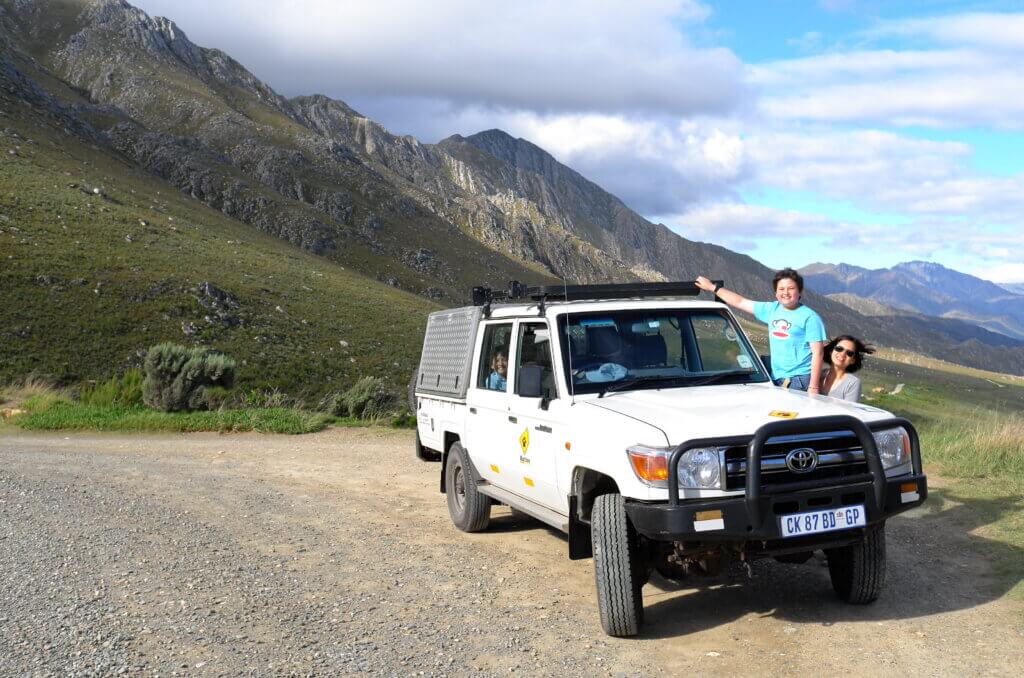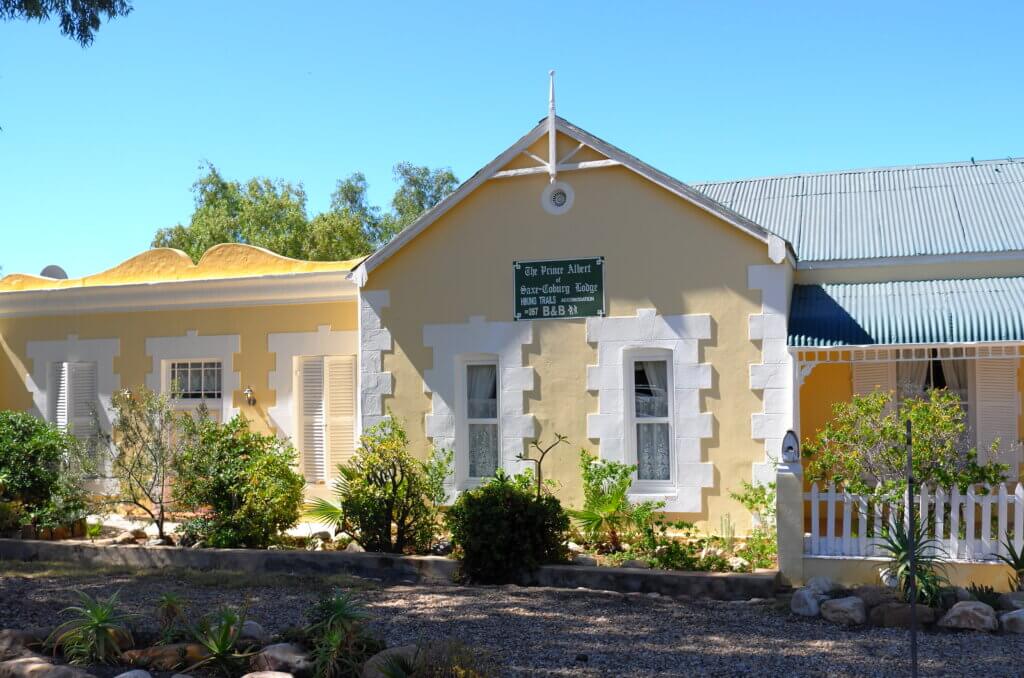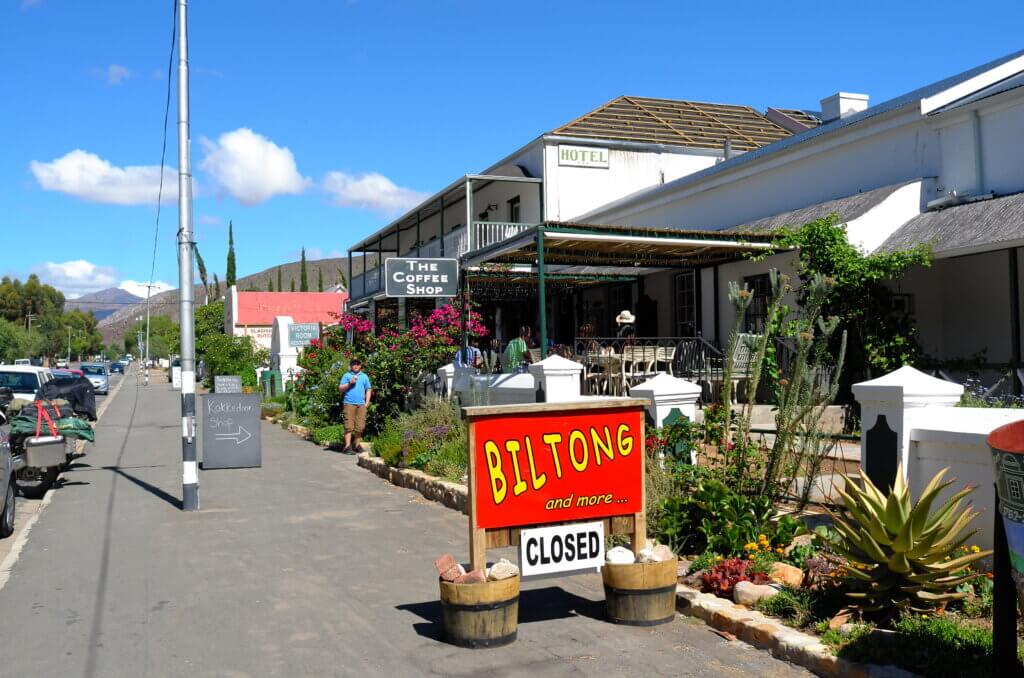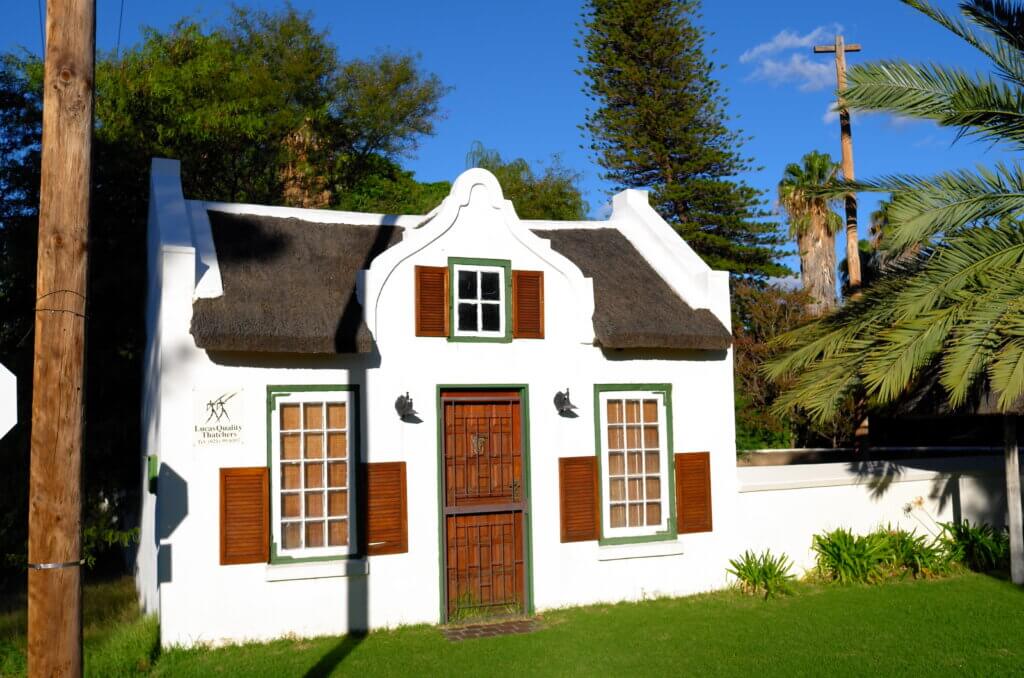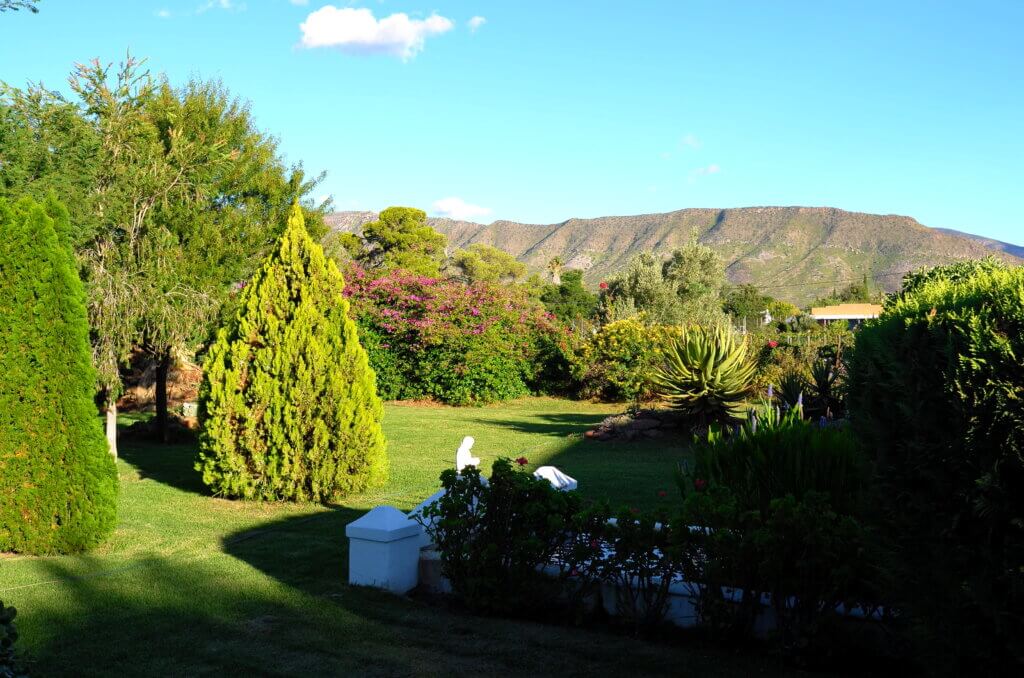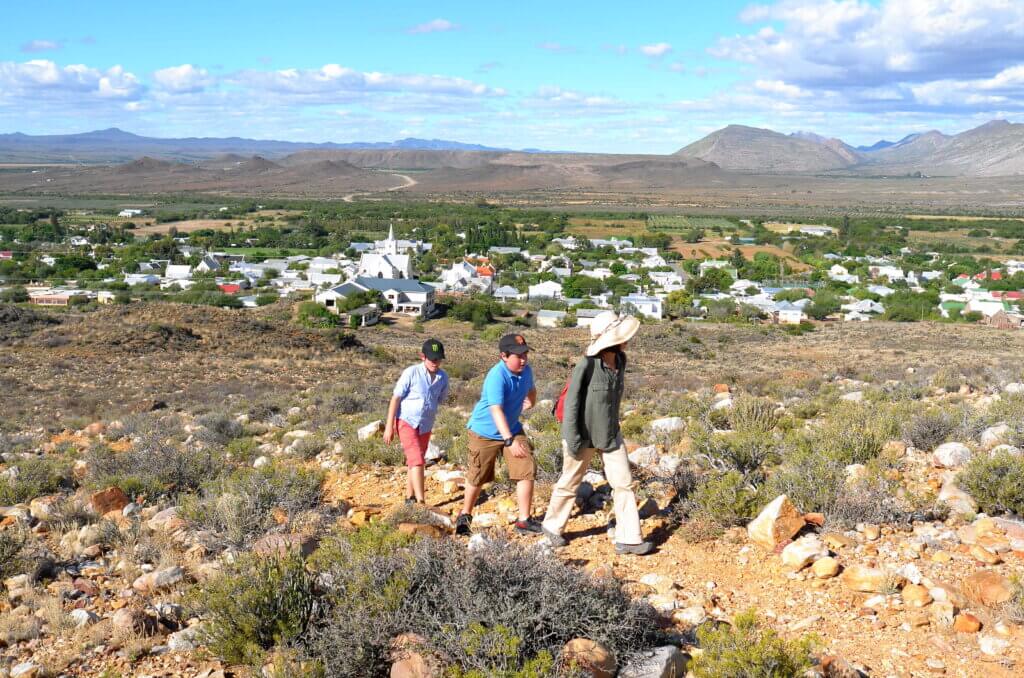Prince Albert is a typical small village in the Karoo, the vast semi-arid wilderness which covers one third of South Africa. First settled in 1762 by Dutch “voortrekkers”, it is a small green oasis in an isolated valley surrounded by a harsh semi-desertic landscape and accessed by a hair raising mountain road, the Swartberg Pass.
The neat rows of white Cape Dutch and Victorian houses with their well tended gardens and pretty flower beds could not contrast more with the barren landscape all around it. Today, Prince Albert remains much the same as it was in 1825, when Queen Victoria’s husband, Prince Albert von Saxe-Coburg visited South Africa and the town was renamed after him: a small service town for the tough Afrikaner farmers who carry on their 250 year old battle to tame the unwelcoming land around them. And a South African small town utopia for a few eccentrics who have settled here to escape mainstream life in a big African or European city – as witnessed by the excellent cheese fondue we ate at a restaurant recently opened by two Swiss fugitives. Or by the avant-garde art galleries.
Prince Albert has the otherworldly feel of a community which sits on the edge of sanity, not quite sure where it belongs.
